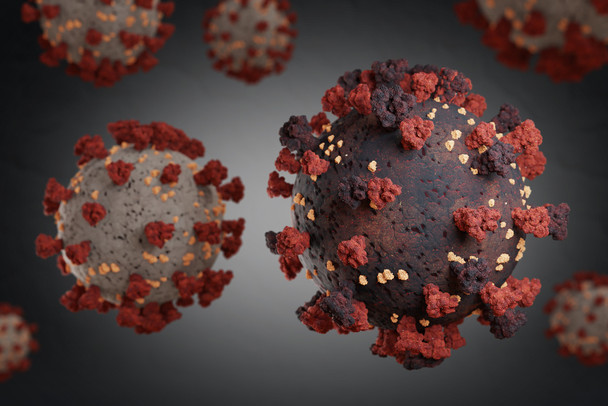Description
SARS-COV-2 SPIKE GLYCOPROTEIN (S2), SHEEP FC-TAG (HEK293/CHO CELL DUO PACK)
This SARS-CoV-2 Spike Duo Pack contains recombinant subunit 2 (S2) proteins manufactured in both human embryonic kidney (HEK293) cells and Chinese Hamster Ovary (CHO) cells for comparative analysis of expression host-cell differences, such as post-translational modifications (PTMs). One of the most common forms of PTM is glycosylation, which is important for many viruses as part of their armoury to overcome the inhibitory effects of neutralizing antibodies and antiviral agents. This pack give researchers the tools to optimize their assay development (or other applications) for maximum specificity and sensitivity. SARS-CoV-2, previously known as the 2019 Novel Coronavirus (2019-nCoV), causes the pandemic COVID-19 disease.
PRODUCT DETAILS – SARS-COV-2 SPIKE GLYCOPROTEIN (S2), SHEEP FC-TAG (HEK293/CHO CELL DUO PACK)
- SARS-CoV-2 spike subunit 2 glycoproteins (Wuhan-Hu-1 strain, NCBI Accession Number: YP_009724390.1).
- HEK and CHO expressed Spike proteins (aa 676-1211 and 685-1211, respectively) C-terminally tagged with sheep Fc.
- Recombinant proteins purified from culture supernatant by Protein G chromatography.
- Presented in Dulbecco’s phosphate buffered saline (DPBS) pH 7.4.
BACKGROUND
Glycosylation plays an important role in the pharmacokinetics and immunogenicity of recombinant proteins and their glycosylation is significantly dependent on the host-cell type (Goh & Ng, 2018). Glycosylation profiles of 12 different proteins produced in CHO-S and HEK293-EBNA1 cells were compared and showed to differ in molecular weight, isoelectric point (pI), glycoprotein structure and mass peak profile. Glycan analysis of the same proteins showed that those expressed in HEK293 cells had more complex glycosylation profiles compared to CHO-derived proteins. In contrast, CHO-derived proteins were more sialylated compared to HEK293-derived proteins (Croset et al., 2012; Uchida et al., 1979). Cell cultivation and analytical methods may also contribute to observed differences in glycosylation structures (Bardor et al., 2005; Ni et al., 2012; Nishikaze, 2017).
SARS-CoV-2 is a respiratory virus which causes coronavirus disease 2019 (COVID-19). The coronavirus spike (S) glycoprotein is a class I viral fusion protein on the outer envelope of the virion that plays a critical role in viral infection by recognizing host cell receptors and mediating fusion of the viral and cellular membranes (Li, 2016). The S protein is glycosylated by the host cellular glycosylation apparatus as it passes through the secretory pathway. The resulting glycans give the virus a number of benefits. The mannose residues within these glycans are important moieties which interact with cell surface attachment factors, like glycosaminoglycans (GAGs) and sialic acid-containing oligosaccharides, before binding to the ACE2 receptor. Extensive glycosylation has been reported at the interface of the Spike:ACE2 complex, further highlighting roles for glycans in modulating this interaction. Viral glycoproteins are the main targets of host antibodies, as these molecules are prominently displayed on the virion surfaces. Addition of glycans sterically mask the underlying polypeptide epitopes from recognition of potentially neutralizing antibodies, forming a ‘glycan shield’. These “self”-glycans are believed to be a strategy to escape the host immune response. Therefore, understanding the glycosylation of S protein has important implications in viral pathobiology and vaccine design (Zhao et al., 2021).
REFERENCES
- Bardor M, Nguyen DH, Diaz S, Varki A. Mechanism of uptake and incorporation of the non-human sialic acid N-glycolylneuraminic acid into human cells. J Biol Chem. 2005 Feb 11;280(6):4228-37.
- Belouzard S, Millet JK, Licitra BN, Whittaker GR. Mechanisms of coronavirus cell entry mediated by the viral spike protein. Viruses. 2012 Jun;4(6):1011-33.
- Croset A, Delafosse L, Gaudry JP, Arod C, Glez L, Losberger C, Begue D, Krstanovic A, Robert F, Vilbois F, Chevalet L, Antonsson B. Differences in the glycosylation of recombinant proteins expressed in HEK and CHO cells. J Biotechnol. 2012 Oct 31;161(3):336-48.
- Goh JB, Ng SK. Impact of host cell line choice on glycan profile. Crit Rev Biotechnol. 2018 Sep;38(6):851-867.
- Li F. Structure, Function, and Evolution of Coronavirus Spike Proteins. Annu Rev Virol. 2016 Sep 29;3(1):237-261.
- Nishikaze T. Sensitive and Structure-Informative N-Glycosylation Analysis by MALDI-MS; Ionization, Fragmentation, and Derivatization. Mass Spectrom (Tokyo). 2017;6(1):A0060.
- Uchida Y, Tsukada Y, Sugimori T. Enzymatic properties of neuraminidases from Arthrobacter ureafaciens. J Biochem. 1979 Nov;86(5):1573-85.
- Zhao X, Chen H, Wang H. Glycans of SARS-CoV-2 Spike Protein in Virus Infection and Antibody Production. Front Mol Biosci. 2021 Apr 13;8:629873.










